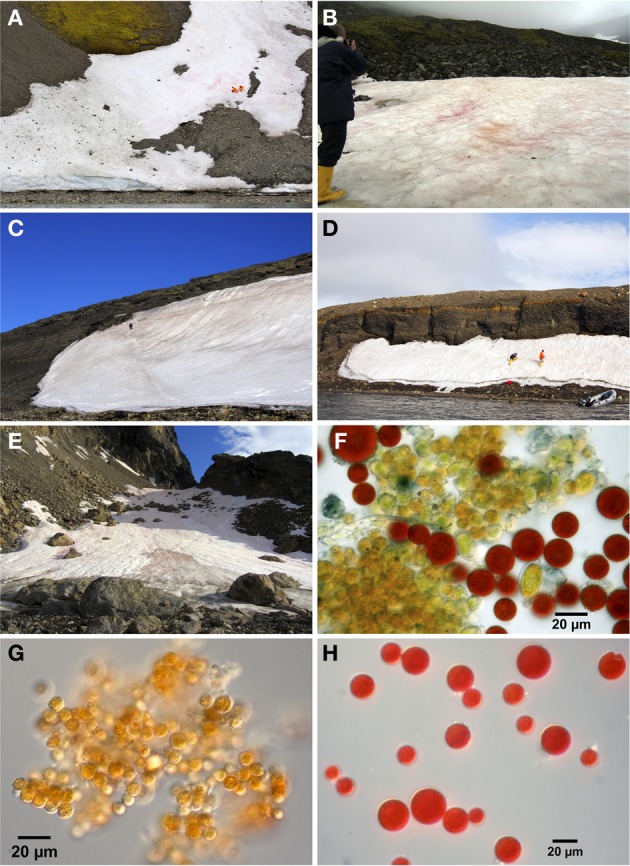Figure 2.

Different habitat conditions on snow fields at sampling sites. (A) 4/10 Midterhuken, steep snow field containing mixed orange and red snow algal cysts and with possible nutrient influx from uphill moss vegetation, (B) 5/10 Hornsund Station, two differently colored snow algal patches on a flat snow field with possible nutrient influx from moss vegetation and nesting birds. Red tinted snow is visible on the left (5/10-1a) and orange snow in the middle/right of the photo (5/10-1b), (C) 7/10 Adriabukta, orange snow consisting of nearly >99% orange cysts surrounded only by rock substrate, (D) 8/10 Selbukta, mixed orange and red tinted snow surrounded only by rocky moraine gravel, and (E) 9/10 Bautaen, intensely colored patches of orange, red or mixed snow algal communities on a field surrounded by rocks. The orange snow (9/10-1a) is visible in the sun on the left, the red snow (9/10-1b) lies in the shade on the right, and the mixed community (9/10-1c) is the tinted patch in the front of the photo. For detailed information please see Table 1. Microscopic pictures of algal populations: (F) diverse algal population consisting of orange and red cysts as well as transient cell stages from different species at site 4/10, (G) orange cysts dominating the orange snow patches at site 9/10-1a, and (H) red cysts dominating the red snow patches at site 9/10-1b. (For panels A,C, and D we credit Stephan Hering-Hagenbeck).
